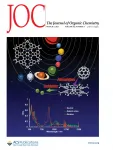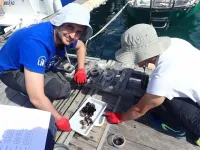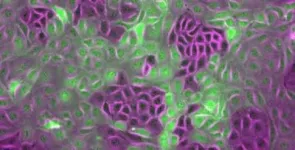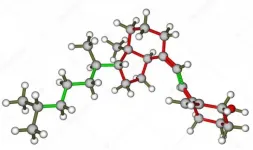(Press-News.org) A continental-scale network of conservation sites is likely to remain effective under future climate change scenarios, despite a predicted shift in key species distributions.
New research, led by Durham University and published in the journal Frontiers in Ecology and Evolution, investigates the impacts of potential climate change scenarios on the network of Important Bird and Biodiversity Areas (IBAs) across the Caribbean, and Central and South America.
The research was carried out in collaboration with Senckenberg Biodiversity and Climate Research Centre, BirdLife International and the National Audubon Society.
IBAs are sites identified as being internationally important for the conservation of bird populations, with over 13,000 sites identified across 200 countries in the last 40 years. Many are covered by formal protected areas, while others are conserved by community-managed reserves or indigenous lands.
Two of the principal responses of species to recent climate change events are changes in range and abundance, leading to a global reshuffling of populations.
Range changes may cause species to disappear from areas they occupy, whilst providing them with opportunities to colonise new sites.
This redistribution could affect the ability of international site networks (including protected areas) to conserve species. Therefore, identifying which sites will continue to provide suitable conditions and which are likely to become unsuitable is important for effective conservation planning as our planet continues to warm.
Estimating the impact of climate change on species' distributions, and the consequences for networks of sites identified to conserve them, can help to inform conservation strategies to ensure that these networks remain effective.
The research modelled the effects of different scenarios of climate change on the wider network.
It determined that, for 73 percent of the 939 species of conservation concern for which IBAs have been identified, more than half of the IBAs in which they currently occur were projected to remain climatically suitable and, for 90 per cent of species, at least a quarter of sites remain suitable.
These results suggest that the network will remain robust under climate change. What is concerning however, is that seven percent of the species of conservation concern are projected to have no suitable climate in the IBAs currently identified for them."
Professor Stephen Willis, Director of Research in the Durham University Department of Biosciences said "The Caribbean and Central and South American region supports about 40% of all the bird species of the world, so this network is vital for a large proportion of the world's birds.
To develop realistic predictions of future changes, we not only considered where suitable climate will occur for species in future but also the likelihood of species dispersing to newly suitable sites.
This information is helping to identify potential management strategies across the IBA network."
Stuart Butchart, Chief Scientist at BirdLife International and a co-author on the study, said: "These results highlight how critical it is to effectively conserve the network of Important Bird and Biodiversity Areas across the Americas in order to help safeguard birds in the region under climate change.
"Despite projections of significant shifts in the distributions of individual species, the network as a whole will continue to play a key role in future conservation efforts."
Alke Voskamp of the Senckenberg Biodiversity and Climate Research Centre added "The results of this study highlight the importance of a network-wide perspective when making conservation management decisions for individual sites when planning for climate change."
The researchers note that designating protected areas to safeguard biodiversity is a cornerstone of species conservation and the importance of considering local environmental management decisions and their impacts on wider, global conservation networks has never been more relevant.
INFORMATION:
MEDIA INFORMATION
For further information please contact Professor Stephen G Willis at +44 (0) 191 33 41379 or email at s.g.willis@durham.ac.uk
Alternatively, please contact Durham University Marketing and Communications Office on communications.team@durham.ac.uk
Source information
Site-Based Conservation of Terrestrial Bird Species in the Caribbean and Central and South America Under Climate Change: http://journal.frontiersin.org/article/10.3389/fevo.2021.625432/full?&utm_source=Email_to_authors_&utm_medium=Email&utm_content=T1_11.5e1_author&utm_campaign=Email_publication&field=&journalName=Frontiers_in_Ecology_and_Evolution&id=625432
PHOTOS
Available through this Dropbox link: https://www.dropbox.com/sh/kg46ynagz2cmzxw/AAD4MWlDBA_tT3UZ97dBWVRSa?dl=0
Credit - Professor Stephen Willis
Useful web links
Professor Stephen Willis' profile: https://www.dur.ac.uk/research/directory/staff/?id=1048
Dr. Stuart Butchart's profile: https://www.zoo.cam.ac.uk/directory/stuart-butchart
Alke Voskamp's profile: https://www.linkedin.com/in/alkevoskamp?originalSubdomain=de
About Durham University
Durham University is a globally outstanding centre of teaching and research based in historic Durham City in the UK.
We are a collegiate university committed to inspiring our people to do outstanding things at Durham and in the world.
We conduct boundary-breaking research that improves lives globally and we are ranked as a world top 100 university with an international reputation in research and education (QS World University Rankings 2021).
We are a member of the Russell Group of leading research-intensive UK universities and we are consistently ranked as a top 10 university in national league tables (Times and Sunday Times Good University Guide, Guardian University Guide and The Complete University Guide).
For more information about Durham University visit: http://www.durham.ac.uk/about/
END OF MEDIA RELEASE: Issued by Durham University Marketing and Communications Office - http://www.durham.ac.uk/news
There are many different types of cancer, but they all have one thing in common: errors in the signals that control normal cell behaviour can cause uncontrolled cell growth and cell division, leading to a tumour. An enzyme called SHP2 plays a key role in this regard. SHP2 is a signalling molecule that in its activated state stimulates cell proliferation. In a normal healthy body, the rates of cell proliferation and cell death are balanced and tumours do not develop. However, if SHP2 becomes too active, the number of cells being created outweighs the number that die, which can lead to the formation of dangerous tumours. Enhanced SHP2 activity resulting from genetic ...
Researchers at the University of Cincinnati say a regulatory protein found in skeletal muscle fiber may play an important role in the body's fight or flight response when encountering stressful situations.
The protein, fast skeletal myosin binding protein-C (fMyBP-C), plays a foundational role in the proper regulation of contractile structure and function in the body's fast twitch muscles -- these muscles produce sudden bursts of power to sprint into action, jump or lift heavy objects. Fast skeletal myosin binding protein-C modulates the speed and force of fast skeletal muscle contraction.
"This response ...
People with type 2 diabetes tend to have poorer muscle function than others. Now a research team at Lund University in Sweden has discovered that in type 2 diabetes, a specific gene is of great importance for the ability of muscle stem cells to create new mature muscle cells. The findings are published in Nature Communications.
"In people with type 2 diabetes, the VPS39 gene is significantly less active in the muscle cells than it is in other people, and the stem cells with less activity of the gene do not form new muscle cells to the same degree. The gene is important when muscle cells absorb sugar from blood and build new muscle. Our study is the first ever to link this gene to type 2 diabetes", says Charlotte Ling, professor of epigenetics at Lund University who led ...
Recently study on synthetic approaches toward polycyclic aromatic hydrocarbons (PAHs) as graphene with a well-defined structure has attracted much attention. A research group in Ehime University has been studying the synthesis and fundamental properties of pyrrole-fused azacoronene (HPHAC), a nitrogen-containing PAH. HPHACs are composed of electron-rich pyrroles, which are easily oxidized, and their dicationic species in particular exhibit unique features such as global aromaticity based on macrocyclic π-conjugation. However, all the compounds reported so far have bulky ...
An interdisciplinary group of Spanish scientists, bringing together biologists and chemists from the Universities of Seville, Huelva, the Autonomous University of Madrid and the Institute of Marine Sciences of Andalusia of the CSIC in Cadiz, have just published the results of their pioneering research studying the management of marinas. The group of scientists, led by the US professor José Manuel Guerra García, studied in detail the sediments in Andalusia's marinas and has proposed a new index, the MEPI (Marinas Environmental Pollution Index) to quantify the level of contamination in these ports.
There has been a proliferation of marinas in recent ...
The giant star featured in this latest Hubble Space Telescope anniversary image is waging a tug-of-war between gravity and radiation to avoid self-destruction. The star, called AG Carinae, is surrounded by an expanding shell of gas and dust -- a nebula -- that is shaped by the powerful winds of the star. The nebula is about five light-years wide, which equals the distance from here to our nearest star, Alpha Centauri.
The huge structure was created from one or more giant eruptions several thousand years ago. The star's outer layers were blown into space, the expelled material ...
How do the billions of cells communicate in order to perform tasks? The cells exert force on their environment through movement - and in doing so, they communicate. They work as a group in order to infiltrate their environment, perform wound healing and the like. They sense the stiffness or softness of their surroundings and this helps them connect and organize their collective effort. But when the connection between cells is distrubeddisturbed, a situation just like when cancer is initiated, can appear.
Assistant Professor Amin Doostmohammadi at the Niels Bohr Institute, University of Copenhagen has investigated the mechanics of cell movement and connection ...
Etrasimod 2 mg treatment group achieved statistical significance in the percentage change in weekly peak pruritis (PP-NRS), in the change in Dermatology Life Quality Index (DLQI), and in the change in Patient-Oriented Eczema Measure (POEM)
Etrasimod 2 mg was generally well tolerated, consistent with data in previous trials
Park City, Utah, April 23, 2021 - Arena Pharmaceuticals, Inc. (Nasdaq: ARNA) today announced data at a late-breaking session at the American Academy of Dermatology VMX Experience. Etrasimod, a novel investigational drug candidate to treat moderate-to-severe atopic dermatitis (AD), demonstrated statistical significance in both clinician and patient reported outcomes in the ADVISE Phase 2b clinical trial. Etrasimod is a highly selective, once-daily, oral sphingosine ...
Paper Title: Safety of Tranexamic Acid in Hip and Knee Arthroplasty in High-risk Patients
Journal: Anesthesiology
Authors: Jashvant Poeran MD, PhD, Director of the Center for Clinical and Outcomes Research, and Associate Professor of Population Health Science & Policy and Orthopedics at the Icahn School of Medicine at Mount Sinai; Calin S. Moucha, MD, Chief of Adult Reconstruction & Joint Replacement Surgery at Mount Sinai Hospital, and Associate Professor of Orthopedics at the Icahn School of Medicine at Mount Sinai; and other coauthors.
Bottom Line: The use of the drug tranexamic acid is commonplace in patients undergoing hip or knee replacement surgery to reduce blood loss. However, this drug works by promoting clotting and safety concerns exist when used in certain high-risk ...
By Karina Toledo | Agência FAPESP – Can a high dose of vitamin D administered on admission to hospital improve the condition of patients with moderate or severe COVID-19? The answer is no, according to a Brazilian study published in the Journal of the American Medical Association (JAMA).
The article reports a randomized, double-blind, placebo-controlled clinical trial, the kind of study considered the gold standard to evaluate drug efficacy. It was conducted with FAPESP’s support by researchers at the University of São Paulo’s ...







